The home of Jeff and Tiny Roebuck in Brandon, Miss., displays a decade of comic-con plunder and custom artwork. Inside the unassuming house, you'll find a mural of American silent-film actress Theda Bara in her "Cleopatra" garb on the door to the laundry room. Secret storage compartments are hand-painted to look like old stone ripped from Hogwarts School of Witchcraft and Wizardry. The house contains all manner of hidden entrances behind bookcases and portraits.
However, the largest creative project for father Jeff, mother Tiny and daughter Cami is never-ending. Near the back of the house, behind a rotating blackout door, is the cosplay workshop. The Roebucks have stocked the room with a variety of fabrics and other materials—just about anything they need to turn Cami into the character she currently has her eyes set on for the numerous conventions she'll attend this year. That includes AVC Convention's first-ever Mississippi Comic Con, which runs Saturday, June 27, and Sunday, June 28, at the Mississippi Trade Mart (1200 Mississippi St.).
"It's just cool to be a different person, to wear a costume," Cami says. "A lot of people that make costumes get, you know, a high from doing competitions or winning or whatever, but I just have fun wearing them."
The Roebucks have been assisting Cami with her cosplay (creating costumes to dress like one's favorite characters from film, television, books or comics) since she was only 7 years old. However, the idea of turning their collective hobby into a potential business came about only three years ago. After seeing colleagues make careers out of costuming, Cami realized she could do something similar.
"I'm not good with 'work' stuff, which sounds lazy and bad, but I don't mean it like that," she says. "I homeschooled for a reason. My way of learning and doing things is abnormal, I guess. So, I thought, 'Well, if I can make money doing weird stuff like wearing superhero costumes to conventions and making stuff to sell, that would be awesome because that's what I like to do.'"
In 2011, the Roebucks founded MoodHairCosplay, which acts as both an alias for Cami's costume work, which now, includes being the official judge of AVC Conventions' various cosplay contests, and as a business, offering custom crafts, such as superhero-themed pillows and plush video-game figures on their StoreEnvy.com page.
Cami's love of cosplay began with a love of comics. When she was about 7 years old, she and her mother went ice-skating with her homeschool group, but when they made it to the counter, the rink ran out of skates in Cami's size. Still, Tiny wanted to bring her daughter somewhere fun, so instead of ice-skating, they visited the comic store.
Since her mother had always drawn comic-book characters and collected superhero toys, Cami had grown up around the medium, but that trip to the comic shop revealed a whole world behind the X-Men movies she'd see with her parents and her mom's old action figures.
"I think it was more that I knew all these characters, but I didn't know (them)," Cami says. "Once I was introduced to comics, it was like, 'Oh, I can finally learn about these characters that I've played with their toys but no idea who they were."
Not long after, Cami approached her parents about creating her first costume for the "X-Men" character Rogue.
"And being the bad parents that we are, we actually let her dye part of her hair white," Jeff says, joking. "And it stayed that way for a while."
When it came to the suit, though, they weren't sure where to start. Tiny called her friend, costume designer John Ridge, who worked on suits for director Sam Raimi's first Spider-Man film. He gave her tips and a list of materials they would need and pointed her toward stores that would happily provide free sample materials if they mentioned his name.
Since then, the Roebucks have become a facet of the comic-con community throughout the South. They joke that Cami has an infinite number of "uncles" from growing up in the convention circuit. Many of the drawings they have framed in their home were gifts from top-tier comic illustrators who have become family friends, most through connections with one of their oldest supporters, Three Alarm Comics in Biloxi, Miss.
"It's kind of funny, because you know how people get all creepy meeting their celebrity heroes and things like that?" Cami asks. "A lot of those artists are my heroes, but I never knew to be starstruck by them because they're all good friends with Scott (Hoverman), who owns Three Alarm Comics."
The family has also become a cosplay-creating machine. Just like with the Rogue costume, it usually starts with Cami coming to her parents with an idea. Then, each parent mans his or her battle station: Tiny handles much of the design work and sewing, and Jeff is in charge of constructing props, a skill that he's developed through his day job as Inky the Clown. He's used everything from lawn furniture to metal thermoses to create past successes, such as the freeze ray from "Dr. Horrible's Sing-Along Blog" and the Destroyer gun from "The Avengers." Cami typically bounces between props and sewing, but her specialty is bringing out flourishes in the design that make the costume distinct from others.
Craftsmanship has always been the main focus, whether it's on a smaller scale like her current projects, such as Kiki from the animated film "Kiki's Delivery Service," or something elaborate, like the butterfly dress that "Hunger Games: Catching Fire" character Effie Trinket wore. Costumes often take weeks of work. Many times, it comes down to deciphering what materials are even needed.
"With a lot of comic-book stuff, which is mostly what I do, there's some things (with) no reference to what it's made of, and some stuff is drawn to where there's no way you can actually sew it that way," Cami says. "That's really difficult: getting reference photos and trying to figure out how they would make that."
Luckily, the workshop has plenty of supplies to experiment with to find the right match for each character. For more rigid costume pieces, the Roebucks use KobraCast and Worbla, thermoplastics that provide various levels of sturdiness. They also use spandex. Lots and lots of spandex.
The family involvement doesn't end in the workshop, either. On several occasions, Jeff has joined Cami in costuming. Together, they've tackled Black Widow and Agent Phil Coulson from "The Avengers" and father-daughter duos such as Luna and Xenophilius Lovegood from "Harry Potter" and Hit Girl and Big Daddy from the film "Kick-Ass." Cami's boyfriend Derek Bond joined her at this year's Pensacon in Pensacola, Fla., which he helped organize last year. They cosplayed together as "bombshell" versions of DC Comics' Aquaman and wife Mera, which are redesigned with a 1940s aesthetic.
"I'm a costume accessory, really," Bond says, joking.
Cami says that having so many people and opinions in the process can be somewhat challenging at times, but it's a much better alternative to what most cosplayers face.
"I've noticed with a lot of people in the cosplay community, their parents aren't supportive of it at all," she says. "It's not that they're super against it, but a lot of them just aren't into it, so (cosplayers) are left to figure out stuff on their own. It's really nice having people that I can bounce ideas off of and figure stuff out with."
Having visited events of every size, from the 52,000-attendee Dragoncon in Atlanta to the 1,000-attendee Marble City Comic Con in Knoxville, Tenn., the Roebucks have a unique perspective on what it will take for Mississippi Comic Con to expand. One significant factor in making a convention successful is the way in which its locale embraces the culture, something that Jeff said was evident at Pensacon.
"The airport even changed its name to the Pensacola Intergalactic Airport for the convention," he says. Boarding terminals became "stargates," and the signage displayed a variety of fictional aircrafts, including TIE Fighters from "Star Wars," the U.S.S. Enterprise from "Star Trek" and Wonder Woman's invisible jet.
However, Dragoncon has long been the family's undisputed favorite, due to its incredible scope, which stretches across Atlanta, with cosplayers filling restaurants and stores. Cami compares it to a family-reunion atmosphere, where they meet up with the many friends they've made through conventions.
"I don't know if it'll ever grow as big as Dragoncon," Cami says of Mississippi Comic Con.
"But I definitely think it will grow. I mean, it already has grown immensely since last year. I hope they can take it to where it's like a Dragoncon for Jackson, though. That would be amazing."
An Origin Story
Some fans anxiously awaited Mississippi Comic Con even before its predecessor, last year's SOPOCU Con, wrapped up. But while founder Greg Hanks hoped to make it an annual event, he hadn't necessarily planned a follow-up convention. Truthfully, he hardly had time to plan for the first one.
Before Mississippi Comic Con, Mississippi Pulp Con was Jackson's go-to for pop-culture enthusiasts. For three years straight, Hanks, who moved to Philadelphia, Miss., from Florida nine years ago, organized the film-festival portion of the event. When he found out that Pulp Con had been cancelled in spring 2014, he called the organizer, local artist Chuck Jett, and asked for his blessing in building a new event to take its place.
"When we first announced it, we had a little bit of backlash because people didn't realize that I went to Chuck first and asked him if it was OK if I did this," Hanks says. "They just assumed that we were trying to swoop in and take over. But once we were like, 'Look, he's even going to be at the event as an artist,' that got cleared up fast. Then, you know, we had support. A lot of people got excited."
Only a nerve-wracking four months stood between Hanks and the SOPOCU Con start date, but with some assistance from friends and a few volunteers, the convention was a success. He realized events like the ones he always enjoyed attending could work in Jackson. He also realized he needed to make a few changes.
"SOPOCU Con was originally just supposed to be that show, and that's it. It was something I'd wanted to do for a while," Hanks says. "But when it happened, and it was successful, and we decided to do other shows, we couldn't really call them all that."
Hanks and business partner Jay Branch decided on the name Mississippi Comic Con, which wouldn't require any explanation. With the streamlined name, Hanks says they're able to skip straight to telling people about the convention's guest lists, which is helpful whether they're talking to potential sponsors or just passing out fliers at Fondren's First Thursday.
The enhanced image has also been useful in growing the number of vendors. Attendees will find products from companies such as Bossier City-based Man Made Soap, which sells scents like the infamous Sex Panther from "Anchorman." Carbonation Toys of Shreveport, La., will also be on hand showcasing its "Fizzkids" series of vinyl figurines in soda-like containers. "Flavors" include Black Cherry Zombie Juice's drooling undead and Cranked Cola's bug-eyed, feral feline.
Hanks and Branch also took on the name AVC Conventions. In a short time, Hanks has already managed to leave his paperwork-centric job at his in-laws' plumbing company in order to work for AVC full time. He may be working longer hours these days, but it's something he enjoys doing. It also doesn't hurt that he's finding a good use for his education—a bachelor's degree in business, psychology and communication, which he earned at Mississippi State University in 2011, and a master's degree in communications with a concentration on public relations, which he earned at Kent State University in 2013.
"The convention thing kind of took off. I mean, we've only been doing it for two years. Our first year, we did one show, and I think this year we're going to have five or six, so it's kind of taken over my life," he says.
While Hanks acts as the face of the company and handles a majority of the web and social media presence of AVC's conventions, Branch is an expert at face-to-face marketing. As a club owner in New Orleans, Branch learned to make the most of on-the-street promotion, handing out fliers, taping up posters and having one-on-one conversations with the people their events are meant to reach.
It seems to be working. Nearly 5,000 people attended last February's Louisiana Comic Con in Bossier City, La., one of AVC's newest creations. Hanks and Branch took note, and will return to Bossier City for the SBC Anime Festival July 11. In turn, that success also helped grow Mississippi Comic Con.
"It's twice as big, and there are twice as many guests. We started out small with one day. We didn't want to jump into anything, you know, because if you do a three-day show your first year, there's a good chance that'll be the only show you ever do," Hanks says. "So we started off with one day to see if (Jackson) actually wanted it, and they seemed to. This year, we're doing two days, and we hope that we at least double our attendance."
Of course, adding a full day of activities to the events takes a more rigorous planning process, extending the hotel stay for each special guest and wrangling enough volunteers to sacrifice a whole weekend instead of a day or two. But Hanks says he's learned that tacking on more days can actually help attract vendors and special guests, many of whom would have to make a single-day round trip if Mississippi Comic Con remained a one-day event.
Hanks' recent successes have also shown him that running a convention means relying on others, including Head of Security Bass Fanning and Guest Relations Coordinator Emily Summerlin, who is also the visitor and membership services coordinator for the Mississippi Museum of Art.
"The biggest thing that I've had to learn is that I can't do everything myself. I'm kind of a control freak, and so is Jay. There are specific ways we like to do things, but we physically can't do every aspect of the show," he says. "We have to find people that we trust to represent us, and we've done that in a lot of areas. Luckily, we've met people who are into this and want to help."
It makes sense, given that Hanks' reason for creating Mississippi Comic Con was to bring people together. Creating a space for artists and fans to meet, in general, is certainly a priority, but as a father of three, Hanks says he also sees conventions as a place for families like the Roebucks to share their mutual interests.
"I think it's important for kids to see their parents excited about things because it makes them want to know more about it or be just as excited," he says. "That's why we try to have a diverse list of things for people to do. You know, not everybody's going to like everything that we have, but we try to have something that everybody can relate to or be interested in."
As someone who isn't from Jackson, Hanks says he still has things he's trying to figure out about Jackson, including how to reach people who might not regularly attend a convention. Jackson's support of the Mississippi Comic Con is one of the most important factors, he says, and that goes beyond it simply being the home of the event.
"You know, Jackson is the capital of the state. It needs to make sure that means something (and) be proud of it," Hanks says. "It should be the epicenter of everything in our state."
Comics & Contemporary Art
Jackson artist Jasmine Cole will miss out on Mississippi Comic Con this year due to a family reunion, but her watercolor paintings, many of which feature cult-classic characters such as Samurai Jack and Marceline the Vampire Queen from "Adventure Time," will be there in fine form.
This won't be the first time that Cole has catered to the comic con crowd. She also held an artist booth at SOPOCU Con. She immediately noticed a natural camaraderie in the crowd. Attendees had a mutual respect for each other's crafts, whether they were artists, collectors or cosplayers. Outside these events, Jackson offers relatively few places to meet people with similar interests.
"Sometimes, you can meet someone at a supermarket, and they'll have, like, a '(My Neighbor) Totoro' t-shirt or something, but mostly it's at comic shops and just art events, even," Cole says. "... It's nice to be around people who appreciate the same things that you appreciate, and you can kind of share it. There's this vague sense of community when you can be around other people that share a passion that you have."
It's a community that Jasmine's father, Ron Cole, introduced her to when he used to collect comics. His hobby gave her plenty of material to read as a child. Around that time, she also started watching anime—animated shows from Japan. Cole's interests merged and inspired her to absorb anything to do with art.
She continued pursuing her passion for art while attending the University of Mississippi. She changed majors a number of times, though she continued taking courses that synced with her creative side. At the suggestion of her mother, Lora Cole, Jasmine decided to study subjects outside of art, as well, and in 2009, she earned two bachelor's degrees: one in studio art and another in print journalism. Then, she began her graduate studies at Mississippi College in Clinton, receiving her master's degree in visual arts in 2010 and a master of fine arts degree in 2013. She now teaches art appreciation classes at Mississippi College.
Given her education in traditional art, some might not pin Cole as the convention-going type, but she admires all forms of art, each with its own history and reasoning. She's also quick to point out the merit of comic-book-style art as a mode of creative expression. Ask her to name a few of her favorite artists, and the long list will include famed painters such as Jacob Lawrence and Jackson Pollock, alongside Fiona Staple, the illustrator behind the science-fiction and fantasy comic "Saga."
Like some Renaissance, pop art and even abstract paintings, comics are "rooted in a sense of storytelling," she says. But if comics don't speak to a person, that's OK.
"You can't really worry too much about whether one type of art works for everyone because everyone has a different perspective on any type of art, whether it's realism or pop art or comic-book art," she says. "If (it) speaks to someone, you've done something good."
While some stigmas suggest that comic-con culture is centered on things meant for children, Cole says more and more people are accepting those interests as art forms, thanks in part to the success of movies and TV shows based on anime, comic-book and graphic-novel properties.
"That idea of it not being mainstream, I don't think that's as strong as it used to be. I think people are really embracing it, you know," Cole says. "... I think (comic culture) is definitely ingrained, and it's been around for so long. Especially now, with so many studios and companies making money off of it, it's everywhere."
For Cole, the next step toward the success of events like the new Mississippi Comic Con would be to reintroduce the art community—museums, dealers and creators—to comics as a unique voice in contemporary art.
Make Mine Mississippi
The melding of Mississippi life and comic-book art is nothing new for Steven Butler, either. The Lucedale native has been a career comic illustrator for about 26 years. His frenetic, action-filled panels have appeared in books from major publishers such as Marvel Comics and Archie Comics. Butler is also a family friend of the Roebucks and attended last year's SOPOCU Con as a guest artist, a role that he'll reprise at Mississippi Comic Con.
"I was very impressed with the turnout. It showed me that there's ... life in the comic-collecting, convention-going crowd locally," he says. "I just really didn't know what to expect because I hadn't done a show in Jackson in a number of years. That was probably back in 1989, around when my friends and I were first getting started in comics."
Growing up, Butler didn't have easy access to comics or conventions that Cole and Cami Roebuck enjoy. Instead, he would stop by Lucedale's surrounding supermarkets and drugstores to find copies when he could, but he didn't step foot in an actual comic shop until the mid-'80s when he was attending the University of Southern Mississippi in Hattiesburg, where he graduated with a bachelor's degree in art in 1988.
While at USM, Butler connected with fellow artist Mitch Bird, who was equally infatuated with the world of comics. The pair began working together on proposals for publishers throughout the school year and summer break, but they soon added an unexpected third member to their team: Roland Mann, who went on to become an editor for multiple "Ultraverse" titles at Malibu Comics.
"We met this guy who was walking around with his girlfriend who was campaigning for homecoming queen, independent from a sorority," Butler says. "We had some art up, and he (pointed) and says, 'Hey, who's into comics?' I said, 'I am. I draw them,' and he was like, 'Well, hey! I write them!'"
Soon after, Butler, Bird and Mann came up with a book about burglars titled "Cat & Mouse." The team found a publisher, Malibu, to release the book, but more importantly, they found companies who wanted to work with them individually.
In 1990, Butler took on his first ongoing series, "The Badger," for First Comics, where he worked for a year. However, he could tell that the company wasn't going to last forever. He met a few Marvel Comics employees at a convention who were interested in seeing how he worked with their famous properties, and he jumped at the chance.
In less than a year, he received his first assignments for Marvel: an issue of "West Coast Avengers" and a special extended annual issue of "X Factor." Having proved himself, Butler soon got work as the principal artist for the Spider-Man spin-off, "Silver Sable and the Wild Pack," which he worked on for three years before Marvel hired him to draw the ongoing series "Web of Spider-Man," which he started on in 1994.
Then, in December 1996, Marvel filed for bankruptcy.
"A lot of their editorial people got fired, and then you lose all of your contacts," Butler says. "There was no guarantee. I didn't have a contract. Only a few people did. So there were a lot of folks that were left without a way of getting work."
About 115 people were suddenly without a job. Thankfully, Butler was flexible. He began doing toy design and caricatures to pay his bills. Then, he received offers from Disney Adventure Magazine and Archie Comics, where he drew a long-running series based on Sonic the Hedgehog.
While he takes the occasional assignments for larger publications, Butler's main focuses lately have been art commissions he receives through Facebook and his new superhero series, "John Aman Amazing Man," which is now four issues into its six-issue run at Gallant Comics.
Don't let the name fool you, though. Gallant isn't a new publisher going toe-to-toe with Marvel or DC Comics. The moniker actually refers to Butler and Jackson ex-pat Barry Gregory, writer for "John Aman." Gregory also co-owns the Orlando-based independent printing company Ka-Blam Digital Printing with Beaumont, Miss. native Thomas Florimonte.
"Lord knows we get a lot of people saying, 'Hey, you need artists? You need writers?' It's like, 'It's not a company. It's just me and one other dude,'" Butler says.
Gallant is his attempt to inject some fun and classic good-versus-evil ethics into the "doom and gloom" found in many modern comics. Working on the series has also shown Butler how accessible the medium can be for newcomers.
"Now, anybody that's worth their salt and wants to take a chance and put something out there can do it. But you've got to work," he says. "You've got to hustle. Doing the conventions is part of it, because it's grassroots, meeting the fans face to face. And you're also meeting other people doing their own thing. It's a community."
Butler says that when he was getting started, most comic artists lived in or near New York City in order to meet deadlines. Today, with current technology and quicker mailing services, it's possible to have a career in comics from anywhere. Still, some of his peers and fans don't understand his choice of home state."A lot of people say, 'Why in the world are you living in Mississippi? Why don't you move somewhere?' And I say, 'Why do I need to?'"
Mississippi Comic Con is Saturday, June 27, from 10 a.m. to 6 p.m., and Sunday, June 28, 11 a.m. to 5 p.m. at the Mississippi Trade Mart (1200 Mississippi St.). Admission $15, $25 for both days. Two children 10 and under per adult enter free with paid admission. Visit mississippicomiccon.com for details.

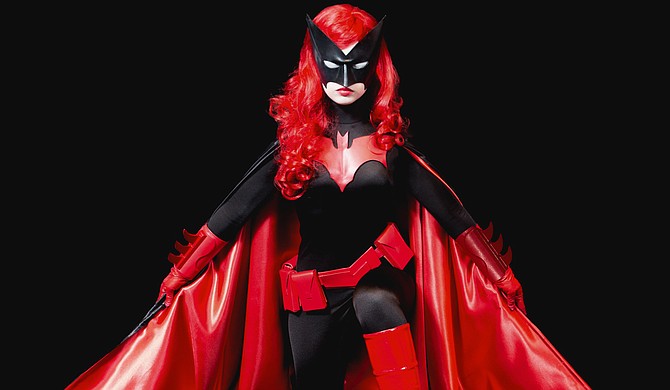
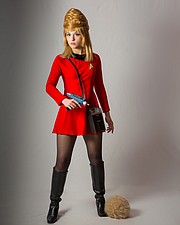
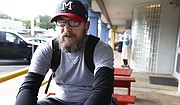
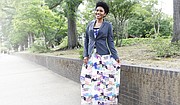
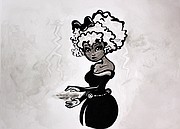
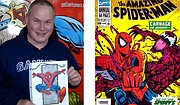

Comments
Use the comment form below to begin a discussion about this content.
comments powered by Disqus